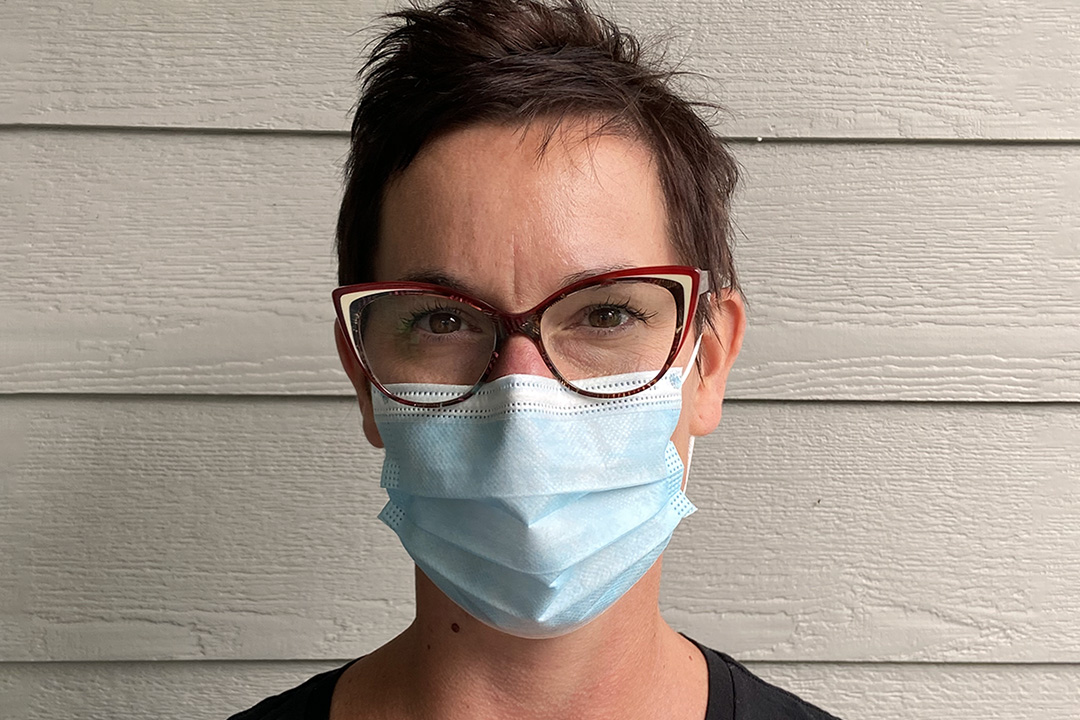
USask respirologist offers tips for wearing masks, and why they work
Wearing a mask is now mandatory indoors for those on campus, and a University of Saskatchewan (USask) respiratory expert says there are plenty of good reasons why they help protect you and others around you.
By James Shewaga“Wearing a mask is a safe and inexpensive way to lower the risk of spreading the virus,” said Dr. Erika Penz (MD), an associate professor of respirology, critical care and sleep medicine, in USask’s College of Medicine. “Since we know that (COVID-19) is mainly spread by droplets from our mouth when we talk, cough and sneeze, wearing a mask, as well as maintaining physical distancing and regularly washing your hands, are simple steps that are so important.”
Following the best public health evidence available, on August 24 the university made wearing a non-medical mask or cloth face covering compulsory as USask prepared for the start of the fall term. While the majority of courses will be delivered remotely, masks must be worn in labs, libraries, research centres and recreation facilities by all faculty, staff and students, as well as visitors, vendors and contractors approved to be on campus.
As more peer-reviewed studies continue to point to the benefits of mask wearing, Penz believes public acceptance is slowly changing in support of it.
“I think when you start to see the evidence and you combine that with clear messaging from health professionals, public health and government leaders and our education system, I think that helps with public acceptance,” she said. “I think there is growing acceptance and with the school year starting and with children adopting the use of masks, I think that will help. It’s amazing how much our culture changes and adapts once our children readily embrace something new.”
How effective are masks?
“Experts believe that if you were to have more than 80 per cent of the population wearing masks, we would be much more successful in reducing the spread of the virus,” said Penz. “So, the more people who wear masks, the more effective mask wearing will be. You are not only protecting others from you, but when everybody else is wearing a mask, you receive the same benefit from others. The virus cannot move independently, so that is why a cloth mask is an effective barrier to protect all of us.”
Do masks limit ability to breathe?
“Some people worry, ‘What if I can’t get oxygen in, or when I blow out carbon dioxide, will it get trapped in the mask and make me sick?’ But those molecules, oxygen and carbon dioxide, are so small, so that it is not a concern, and most people quickly learn to adapt and breathe easily,” said Penz. “A well-fitting mask is not harmful for the majority of people.”
Who should not wear a mask?
“Children under the age of two are not recommended to wear one, as well as people with severe lung disease who actually have a difficult time breathing, they should not put on a mask,” she said. “The third group are people who can’t take off a mask themselves without the assistance of others; they should not have a mask put on their face.”
Which non-medical masks are best?
“Non-medical masks ideally should be made of cloth, as opposed to plastic or other materials that are not breathable,” said Penz. “They should be made of a tightly woven breathable fabric like cotton or linen, and what is recommended is that you have probably at least two layers of material. The mask should fit properly over the face, covering your nose and your mouth and fitting to just under your chin, and it should tie behind your head or loop behind the ears.”
What should you not do?
“Don’t pull it down and rest it on your chin or under your chin,” said Penz. “We need to minimize touching our masks, so when you have it on, you don’t want to be touching it and moving it around on your face, or hang it from your ear or pull it down under your chin so you can more easily talk to somebody. That mask is going to be pick up particles in the air around you, so if you touch it or move it around, it is just one more layer of risk of passing the virus.”
What are good tips to teach children?

